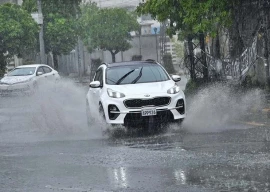
An education emergency has been imposed by the federal government to stem and cure the rot of 26.2 million out-of-school children (OOSC), the second highest in the world according to Unicef. The farce of education emergency has been enacted many a time with no discernible remedial impact. Einstein said: “We cannot solve our problems with the same thinking we used when we created them.”
Malala Yousafzai in a letter to Prime Minister Shehbaz Sharif said: “Currently, 26 million children — predominantly girls in the poorest districts of Pakistan — remain out of school. Furthermore, more than 200,000 teachers’ seats are vacant nationwide.”
The efficacy of steps taken and the genuine concern behind imposing emergencies can be gauged from the slow rate of reduction in OOSC percentage: 33% in 2013-14 to 32% in 2019-20 i.e., one per cent per six years. Also, the humongous number of teacher vacancies reflects the institutionalised state apathy towards education.
The first go-to step taken haphazardly under emergency is to corral all the OOSC into the school premises without removing the demotivating stimuli lurking there. If ever children come back to schools, they sooner or later play truant again either for finding the same unfriendly pedagogical milieu or under socio-economic pressures.
The financial burden in this galloping inflation is proving back-breaking, particularly for those lower financial strata to where 26.2 million OOSC belong. A large number of students at public schools spend their post-school time helping their parents in their work. Consequently, they drop out of the learning process under extreme financial pressure. Also, the technical education that requires fewer years than that of formal education to make them employable has not been given due attention.
One way to retain students up to higher secondary education is to staple its completion with some educational fund or scholarship. The government will also have to enhance the absorption of educated communities into the job market to incentivise education.
As the Chief Minister of Punjab pointed out that teachers in state-owned educational institutions once employed deem themselves employed till retirement. The absence of any check and control at teachers’ performance makes them cling to their jobs parasitically. There is no denying this being the killer cause of institutional failure.
It is, however, intriguing to ascertain the factors behind public teachers’ burnout and smugness. One is the non-seriousness to the cause of education trickled down from the higher echelons. The teachers’ non-teaching duties condition them that they are not meant for teaching children, but rather for conducting board exams, national census, general elections and public rallies.
At private institutions, teachers stay put for the full academic year. One wonders why board exams that pull public teachers out of institutions for performing vigilance duties are not held in after-school hours, as does the Allama Iqbal Open University Islamabad. AIOU uses public buildings and teachers without causing any loss to the formal system. The first prerequisite under any education emergency must be to let teachers teach the students only.
The unavailability of essential facilities such as clean toilets, potable water, proper seats and boundary walls dispels the students from attending the public institutions despite the availability of free education and qualified staff.
The conundrum of medium of instruction in Punjab nullifies the government’s pledge to alleviate the financial burden on parents by providing free books. The books are printed in English to promote English as a medium of instruction in public schools whereas neither students nor teachers afford learning and teaching in English.
The low literacy rate of 62.2% and dismal allocation of 1.7% of the GDP to the education sector reveals the level and validity of the concern of respective governments and their education emergencies.
Published in The Express Tribune, May 20th, 2024.
Like Opinion & Editorial on Facebook, follow @ETOpEd on Twitter to receive all updates on all our daily pieces.















COMMENTS
Comments are moderated and generally will be posted if they are on-topic and not abusive.
For more information, please see our Comments FAQ